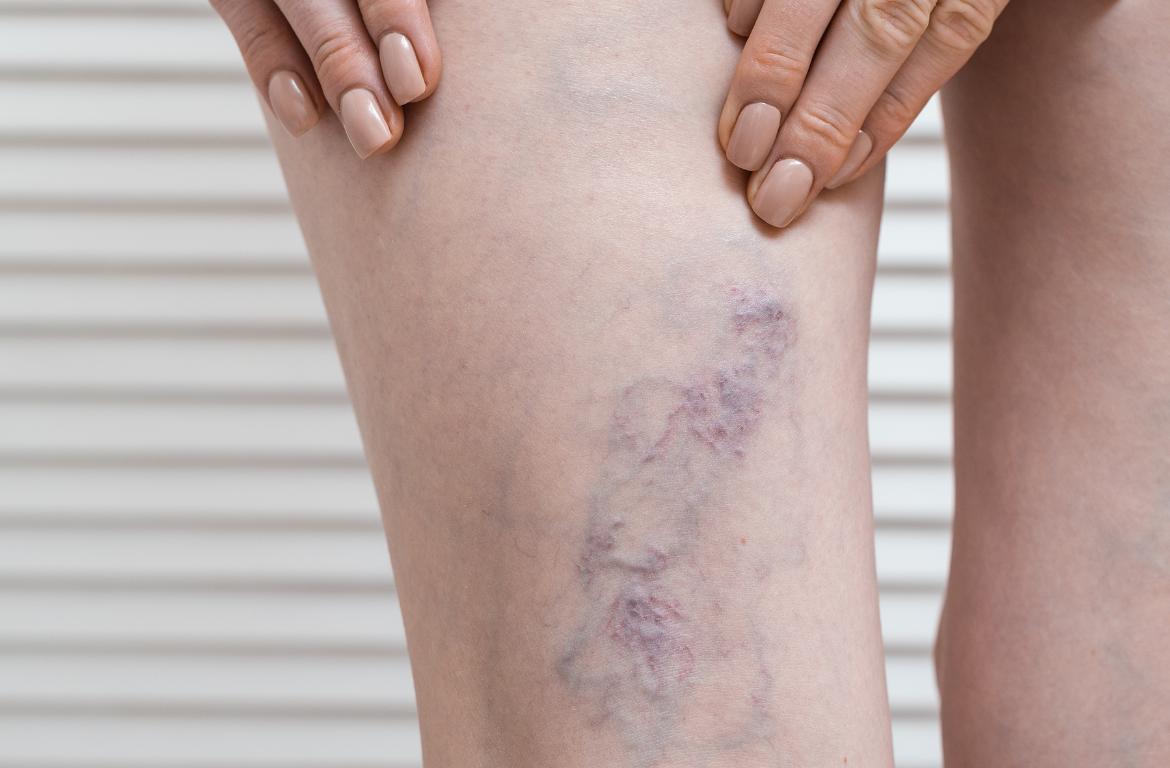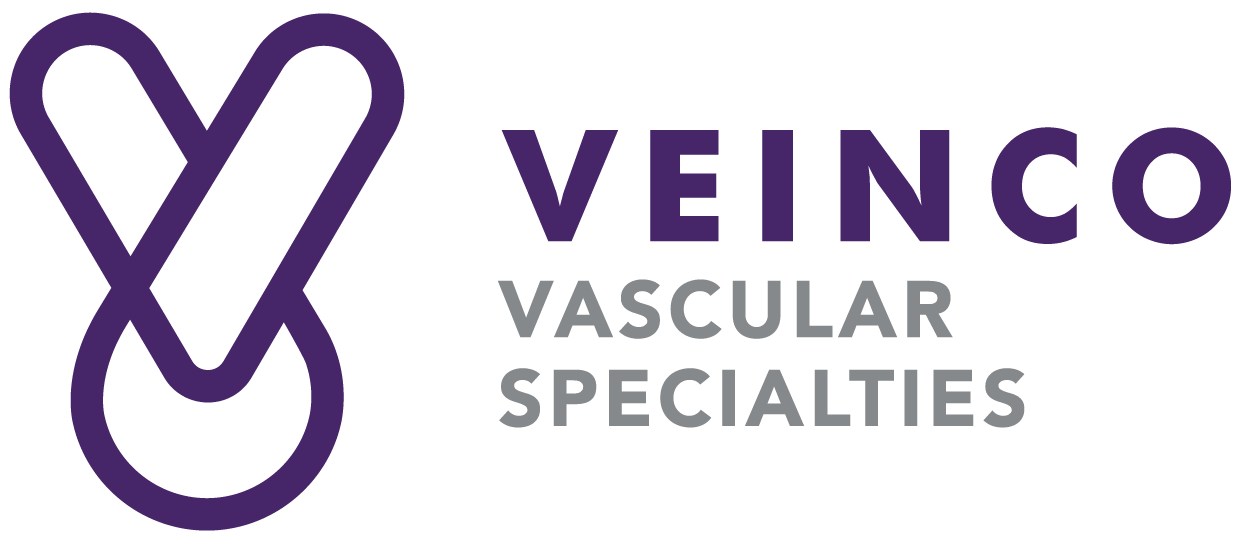
Varicose veins or spider veins in the legs? Are you starting to worry about some symptoms and don’t know how to treat varicose veins? You may be surprised that this is a more frequent problem than you think. Currently, venous diseases not only affect the elderly, but people of all backgrounds can experience early stages of varicose veins even at an early age.
If that is your case, continue reading to learn its main signs and what are the best minimally invasive varicose vein treatments for this condition.
What are varicose veins, and what are the main symptoms?
Veins are an essential element of the circulatory system that can transport blood from the whole body to the heart. That fact, in turn, allows different parts of the body to function correctly, but what can happen when a vein weakens? Just as when a road is damaged, traffic cannot flow properly, when the valves in the veins are damaged, the blood stops flowing freely. Thus, they cannot push the blood to the heart, and the vein begins to deteriorate, causing chronic venous insufficiency.
Moreover, such an effect can cause the veins to dilate or, on the contrary, to twist, provoking not only an unattractive appearance but also causing discomfort. At first, the symptoms may be mild or almost imperceptible, but as this varicose disease progresses, it can even affect the quality of life of those who suffer from it. So, learning how to treat varicose veins from their first signs is vital.
These are the symptoms and/or side effects of the most common varicose veins:
- Swelling
- Burning or tingling
- Heaviness in the legs
- Pain or cramping
- Ulcers or bleeding
- Appearance of red spiders
- Bulging and thickening of the vein
- Green or purple coloration in the vein
Is it possible to treat varicose veins without professional help?
Everything will depend on the stage of chronic venous insufficiency disease. In fact, at the appearance of the first signs or symptoms, effective measures can help avoid complications and prevent varicose veins. Often, it is about incorporating into the daily routine habits that favor the health of the veins and their good circulation.
Here are 5 habits that can be effective in the initial or preventive stages:
Compression stockings
The pressure that compression garments can exert for medical use applies a gentle force at specific points of the leg that can favor the circulation of blood ascending to the heart. At the same time, they can prevent blood clots and lessen swelling. Although they can be especially useful, they are not recommended for patients with diabetes, neuropathies, or another type of chronic problem that affects the health and sensitivity of the legs.
Exercise
One of the best ways to prevent and encourage good circulation is through constant exercise. This does not necessarily have to be intense. Even having a daily walking routine can help blood flow in the legs. The time and activity level will depend on each person’s circumstances, but the basic idea is to avoid a sedentary lifestyle or prolonged periods in the same position.
Maintain a healthy weight
Did you know that maintaining an adequate weight can lower blood pressure? If you suffer from obesity or are overweight, you can choose to improve your eating habits and reach a healthy weight. In general, changing your eating style and consuming foods low in fat or salt can prevent fluid retention, increase mobility, and lighten your legs, optimal elements in nutritional health care.
Elevate your legs
This simple but effective method is effective in improving blood flow. Of course, although it requires little time, constancy is needed. You can take several breaks a day to lie down a little and raise your legs above the level of your heart. You can place them in the direction of a wall or put them on several pillows. In this way, the force of gravity will help you return blood flow to the heart.
Avoid tight clothing and choose appropriate footwear
Is wearing compression garments the same as wearing tight clothing? No, in fact, there are significant differences.
As we have already mentioned, compression stockings must be of a medical or specialized nature for varicose veins. Instead, tight clothing on the waist, groin, or legs can cause a ligature that causes blood flow to become obstructed instead of flowing. Similarly, suitable footwear can help you avoid further swelling.
Medical treatments for varicose veins
Is surgery always necessary to treat varicose veins? Surgery is usually recommended when the damage to the vein is advanced or irreversible.
Currently, various alternatives are perfect for those who wonder how to treat varicose veins according to the venous disease level. The key is not to wait to treat them at an advanced stage but to seek professional help as soon as possible. Many of these treatments are straightforward and minimally invasive.
The specialty that is dedicated to both the diagnosis and application of treatments of diseases that affect the veins and blood vessels is known as vascular angiology. This medical-surgical specialty is closely related to vascular and endovascular surgery and studies the vascular tree and lesions of the veins inside. An expert can provide an appropriate treatment according to the patient’s needs through advanced techniques and other complementary treatments.
Next, we tell you about the 5 most sought-after methods:
1. Minimally invasive varicose vein treatments and procedures
The reality is that there will be cases in which surgery is the best option to eliminate symptoms or reduce discomfort. Although there are different techniques for varicose vein procedures, it is usually performed under general or spinal anesthesia, which lasts between 1 to 2 hours. An experienced board-certified surgeon at Veinco will tie, seal, and remove the damaged vein during the procedure. Subsequently, following the postoperative care that allows a correct recovery is necessary.
2. Radiofrequency Ablation
Radiofrequency energy is a minimally invasive, low-risk outpatient method for treating veins. It consists of sealing the affected vein through an ultrasound-guided catheter. Thus, blood is redirected to healthy veins. Techniques such as the ClosureFast procedure can be used, in which local anesthesia is usually applied and allows patients to return to their activities even on the same day.
3. Sclerotherapy
This procedure is applied to initial varicose veins or spider veins. It involves injecting a healing solution directly into the vein. In this way, the collapsed vein will be absorbed and disappear by the local tissue in a few weeks or months, and the blood will begin to flow through alternate veins. Sometimes the results can be achieved in one or several sclerotherapy sessions.
4. Skin laser therapy
It is considered a cosmetic treatment since, through an intravenous or endovenous laser, you can get a better appearance in the presence of varicose veins. This specialized treatment aims to coagulate and destroy large and deep blood vessels, thus preventing balls from forming on the surface of the skin. One of the great advantages of laser treatment is that it is practically painless since it is not necessary to use needles or introduce chemicals into the body.
5. Medicinal treatment
In some cases, oral or topical medications are recommended that favor circulation and de-inflammation of varicose veins. However, various studies have shown that depending on medication to treat varicose veins does not result in satisfactory results. Some of these consist of anticoagulants or flavonoids that require a prescription. It is worth mentioning that these do not have as their primary objective to improve the cosmetic appearance but to reduce symptoms of the varicose vein without treating the root of the problem or the damaged veins. Thus, it is often used as a complementary treatment to minimally invasive vein treatments, as mentioned above.
Where to get an accurate diagnosis and treatment?
If you want to find an effective method, one of the best ways is to go to a center specializing in chronic venous insufficiency treatment. Getting an expert opinion will allow you to know how to deal with varicose disease and have safe and reliable options. Many people have managed not only to improve the appearance of their legs but to recover their quality of life with high-quality treatments at affordable prices.
Do you want to receive a specialist consultation right now? Get the best professional care by emailing us at hello@veinco.com.mx, or you can call us toll-free at (888) 568-3409 and receive a free consultation. Come to one of the best vascular therapy clinics in the world, learn how to treat varicose veins, and from day 1 you will receive the compassionate patient-centered care you deserve from our Board-Certified Vein Surgeon.
